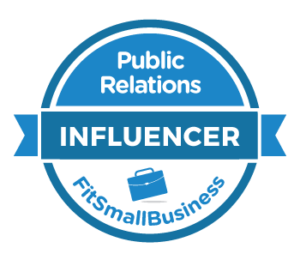I had the great pleasure of writing for PR Conversations again last week, after Judy Gombita graciously agreed to run with my post (the third one I have written for them). For the uninitiated, the group blog is a great forum that covers a range of PR subjects that should be of interest to client-side and agency folks around the world.
again last week, after Judy Gombita graciously agreed to run with my post (the third one I have written for them). For the uninitiated, the group blog is a great forum that covers a range of PR subjects that should be of interest to client-side and agency folks around the world.
My topic was inspired by reviews of the book The Invisibles – which highlights the artistry of behind-the-scenes workers vs. the vanity of self promoters and personal brand builders. I appreciated the thoughtful comments on my post. However, at some point, the thread took a turn from self promotion to PR for PR, and how the field is portrayed in the media.
Heather Yaxley recalled a discussion at an industry event: Ian Burrell (Assistant Editor and Media Editor of The Independent newspaper) argued that a problem for PR is that it doesn’t own its public profile and lets this be defined instead by journalists and those we deem aren’t representative of our industry.
Toni Muzi Falconi replied: journalists have little idea of what we do for a living beyond hacking them simply because neither us as professionals nor… our professional associations have ever reached out to them in a planned and conscious way…. The conclusion is that it is not their fault if they do not understand what we do. It is our fault.
It got me to thinking, and I ran across a NY Times article over the weekend which crystallized my thoughts further. It was about celebrities using social media to wrest control of their narratives from the gossip media.
I recognize that it is a much different and greater challenge to seize the narrative for an entire field. But that doesn’t mean we should not try, and take it upon ourselves, individually and collectively (via the associations Toni referenced) to use our craft to promote better understanding of the field.
Here are a few ideas to get the process going, I of course welcome input from others, and hope that I can rally interest in the cause.
Build Consensus, Carry the Message
Part of the problem is that the field can be amorphous – terms that sound similar but are quite different get sloshed around (publicity, PR, media relations, communications, etc.) Even within the field, there’s disagreement about how to define PR and what is important.
Some may recall the PRSA-driven effort of a few years ago to update the definition of PR, and all of the industry mud wrestling around this. How can the PR field help others understand what we do if WE can’t agree? We don’t want to be like the Democrats, a party of great ideas, but one that is riven and does not carry a cohesive message.
There is now an updated definition – why not embrace it and do your part as a member of the profession in educating, and carrying the message?
Become Tireless PR Promoters and Educators
My PRC post was about the tension between self promotion and the quality of our work; I argued that you can have your personal brand and happy clients / employers too. Why not allocate a portion of the personal brand building time budget to defending and educating about our field? Wouldn’t we all have stronger individual brands if the profession is better understood, and seen in a positive light?
If you see something (inaccurate or slanderous about PR), say something. Apply the same skills and diligence that you do for your clients / employers – become ruthless fact checkers and correcters of the record.
That is what I have tried to do with this blog (and Twitter). I know many might be gun shy about taking on those who buy ink and electrons by the barrel (especially when PR critics are the same people you approach for coverage) – but if you use the right tone it can work, and even earn some respect. E.g. I have taken on NY Times, Businessweek and many others (the links point to these posts) – and am still in business.
Promote PR as a Fun, Smart and Creative Field
The sad fact is that most people simply do not understand PR. The running joke in my family has been that even my kids do not know what I do (they have asked if I can get them on TV).
Most seem to confuse it with advertising, others may think that it is sneaky and vaguely illicit. Those who say they do know the field (e.g. certain members of the media) seem to assume it is just about pitch spam and hype.
As I mentioned in this post, one of the problem is that there is no recognized cult of PR, unlike advertising (which is generally seen as fun, hip, glamorous and creative).
It will take some work to turn this around – but if we are talking about the PR field as a client, and building the brand of PR, why not talk about campaigns and tactics? E.g. why not have a real reality show about PR – one that does not make everyone think that the field is just about celebrity publicity, for a change?
Some might think that it is not that interesting; Davina Brewer commented on my PRC post: Real Work is hard to glamorize. Reading, typing, meetings that would put someone who’s on their 4th cappuccino to sleep…
She makes a good point, on the other hand there have been many fun and entertaining moments in my experience, ones that would be good fodder for a reality show, or even a musical or book or movie (well, hopefully not a tragedy).
This post was about the nefarious words that surround PR in media. Why not pool together and sponsor/run a campaign that builds better understanding by explaining what we aren’t:
“PR is… NOT!!!”
PR is not a crisis
PR is not a problem
PR is not a war
PR is not publicity
PR is not advertising








